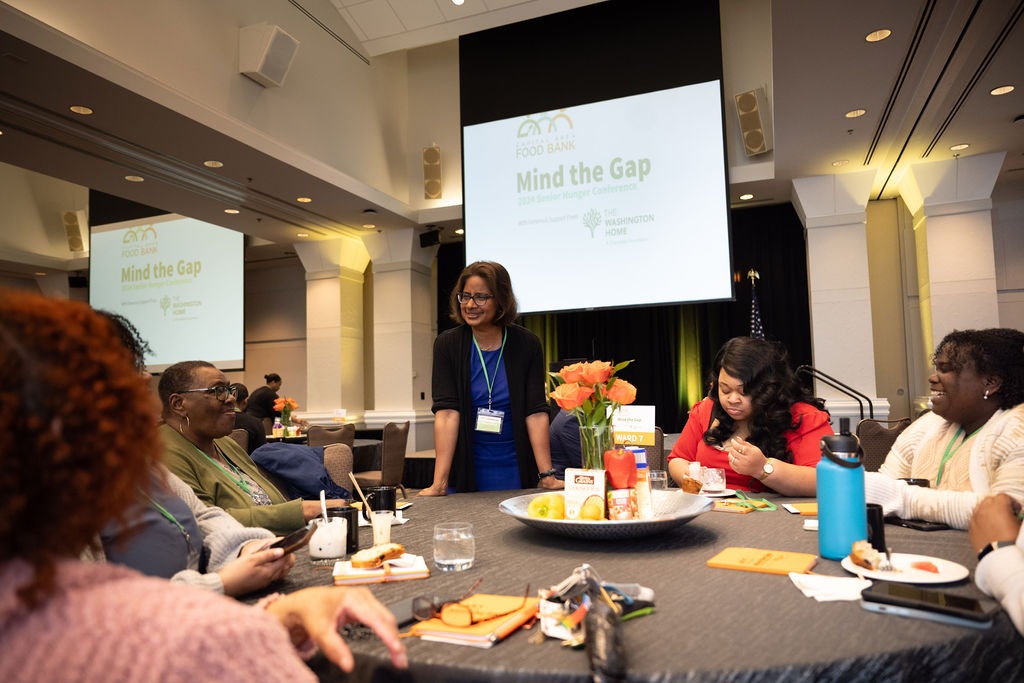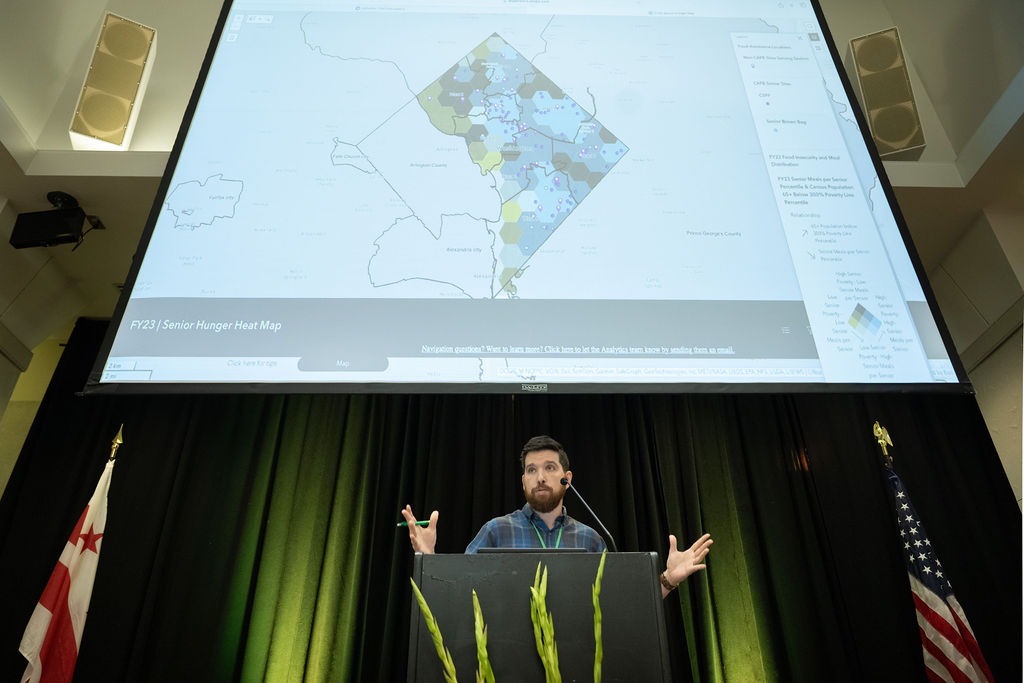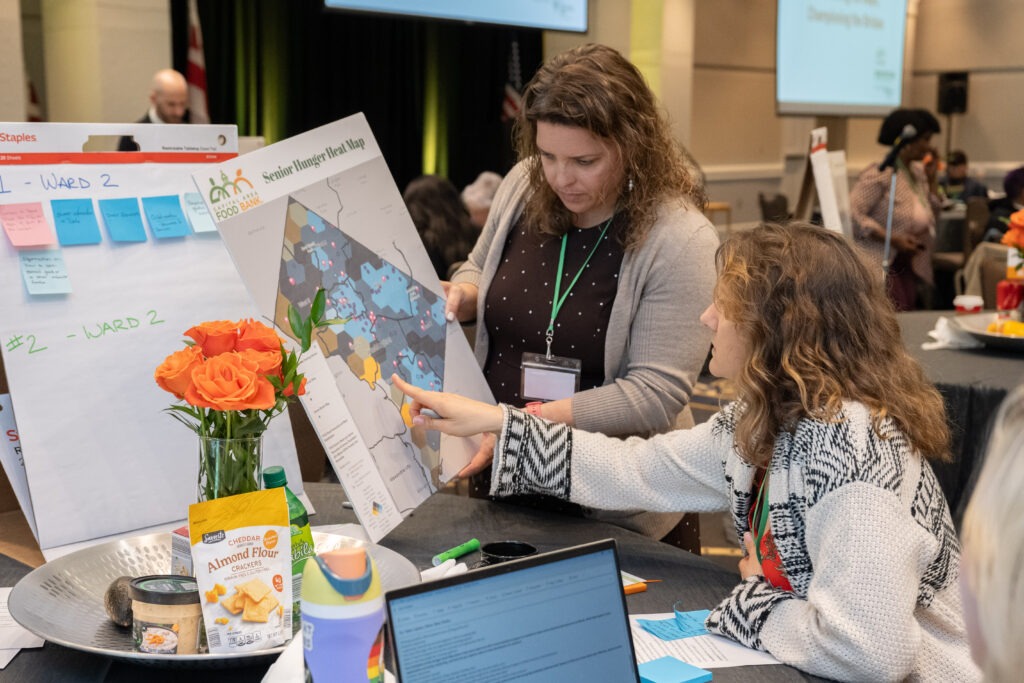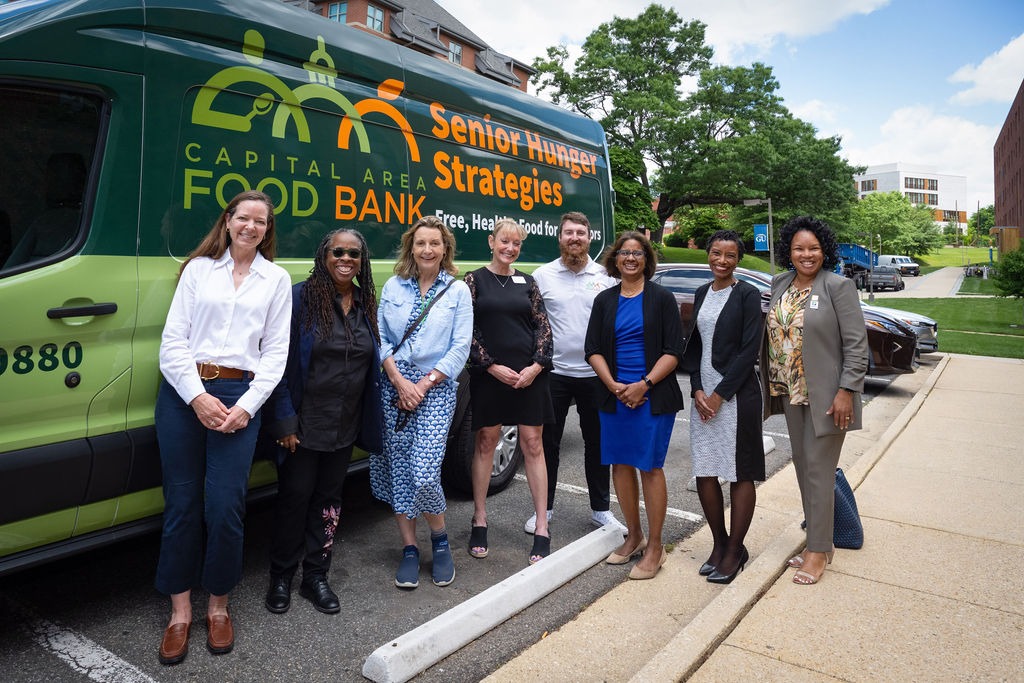As part of Older Americans Month, the Capital Area Food Bank in May convened our first-ever Senior Hunger Conference: a convening to discuss strategies for addressing food insecurity among DC seniors.
One in three DC seniors experience hunger, one of the highest rates in the country. That’s unacceptable, and alongside nearly 100 leaders of key organizations involved in addressing food access for DC seniors, we met to talk about how to better collaborate to address this issue.

Seniors often have limited income, making it difficult to afford food and other expenses like rent and medicine. They may not have access to transportation to grocery stores where they can access nutritious food, and they are more likely to have chronic health conditions that make cooking and grocery shopping difficult. But through collaboration, we can better ensure that those who have given so much can access the food they need.
During the daylong event, leaders of the food bank, DC’s Department of Aging and Community Living, and The Washington Home spoke about the high food insecurity rate of seniors in the District – and our shared commitment to reducing it. Members of the food bank’s Client Leadership Council detailed their experiences as seniors facing hunger. During breakout sessions, we laid the foundation for working together more effectively and efficiently to reach our vulnerable neighbors.

These insights, stories and brainstorming sessions were paired with a deep-dive into the data available on where programs seeking to serve seniors are — and are not yet — meeting the need we know exists. The food bank’s analytics team shared our Senior Hunger Heat Map, a new tool showing how areas of need overlap with areas where meals are available. The map was built using data detailing food distributions through our senior programs and through food bank partners, as well as data contributed beforehand by conference attendees.
Among the takeaways from the Senior Hunger Heat Map:
- The greatest concentrations of older DC adults experiencing or at-risk of food insecurity live in Wards 5, 7 and 8.
- Ward 7 has among the highest levels of poverty among older adults — but it has a disproportionately lower amount of meals currently being provided per person in need. That results in a gap between those in need and the level of food assistance available.
- While it has a lower level of food-assistance needed compared to other wards, Ward 3 also has the smallest support network of any ward, which results in having some communities are that underserved.

More data collaboration will enable this map to become an even more powerful tool for identifying areas of our community that require more food assistance. By better understanding where seniors live and where they currently access services, we can assess whether older residents are being served through existing programs for senior or for the broader population — or if they may require more targeted outreach to help overcome certain obstacles, such as limited transportation.
A special thank-you to The Washington Home, which not only sponsored our electric van for delivering food to seniors, but also provided generous support to make the conference possible.


